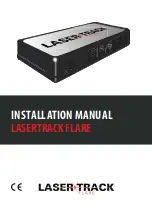
becomes active. The “ESC Activation/Malfunction Indi-
cator Light” also flashes when TCS is active. If the “ESC
Activation/Malfunction Indicator Light” begins to flash
during acceleration, ease up on the accelerator and
apply as little throttle as possible. Be sure to adapt your
speed and driving to the prevailing road conditions.
NOTE:
•
The “ESC Activation/Malfunction Indicator Light”
and the “ESC OFF Indicator Light” come on momen-
tarily each time the ignition is placed in the ON
position.
•
Each time the ignition is placed in the ON position,
the ESC system will be on even if it was turned off
previously.
•
The ESC system will make buzzing or clicking
sounds when it is active. This is normal; the sounds
will stop when ESC becomes inactive following the
maneuver that caused the ESC activation.
The “ESC OFF Indicator Light” indicates the
customer has elected to have the Electronic
Stability Control (ESC) in a reduced mode.
Electronic Roll Mitigation (ERM)
This system anticipates the potential for wheel lift by
monitoring the driver’s steering wheel input and the
speed of the vehicle. When Electronic Roll Mitigation
(ERM) determines that the rate of change of the steer-
ing wheel angle and vehicle’s speed are sufficient to
potentially cause wheel lift, it then applies the appropri-
ate brake and may also reduce engine power to lessen
the chance that wheel lift will occur. ERM can only
reduce the chance of wheel lift occurring during severe
or evasive driving maneuvers; it cannot prevent wheel
lift due to other factors, such as road conditions, leav-
ing the roadway, or striking objects or other vehicles.
NOTE:
ERM is disabled anytime the ESC is in “Full Off” mode
(if equipped). Refer to “Electronic Stability Control
(ESC)” in this section for a complete explanation of the
available ESC modes.
WARNING!
Many factors, such as vehicle loading, road condi-
tions and driving conditions, influence the chance
that wheel lift or rollover may occur. ERM cannot pre-
vent all wheel lift or rollovers, especially those that
involve leaving the roadway or striking objects or
other vehicles. The capabilities of an ERM-equipped
vehicle must never be exploited in a reckless or dan-
gerous manner which could jeopardize the user's
safety or the safety of others.
Hill Descent Control (HDC) — If Equipped
Hill Descent Control (HDC) is intended for low speed off
road driving while in 4L Range. HDC maintains vehicle
speed while descending hills during various driving situ-
ations. HDC controls vehicle speed by actively control-
ling the brakes.
HDC Has Three States:
1. Off (feature is not enabled and will not activate)
2. Enabled (feature is enabled and ready but activation
conditions are not met, or driver is actively overrid-
ing with brake or throttle application)
3. Active (feature is enabled and actively controlling
vehicle speed)
Enabling HDC
HDC is enabled by pushing the HDC switch, but the fol-
lowing conditions must also be met to enable HDC:
•
Driveline is in 4L Range
•
Vehicle speed is below 5 mph (8 km/h)
•
Parking brake is released
•
Driver door is closed
Activating HDC
Once HDC is enabled it will activate automatically if
driven down a grade of sufficient magnitude. The set
speed for HDC is selectable by the driver, and can be
adjusted by using the gear shift +/-. The following sum-
marizes the HDC set speeds:
HDC Target Set Speeds
•
P = No set speed. HDC may be enabled but will not
activate.
•
R = 0.6 mph (1 km/h)
•
N = 1.2 mph (2 km/h)
•
D = 0.6 mph (1 km/h)
•
1st = 0.6 mph (1 km/h)
•
2nd = 1.2 mph (2 km/h)
•
3rd = 1.8 mph (3 km/h)
•
4th = 2.5 mph (4 km/h)
•
5th = 3.1 mph (5 km/h)
•
6th = 3.7 mph (6 km/h)
•
7th = 4.3 mph (7 km/h)
•
8th = 5.0 mph (8 km/h)
•
9th = 5.6 mph (9 km/h) – If Equipped
SAFETY
115
4
















































